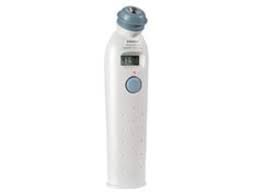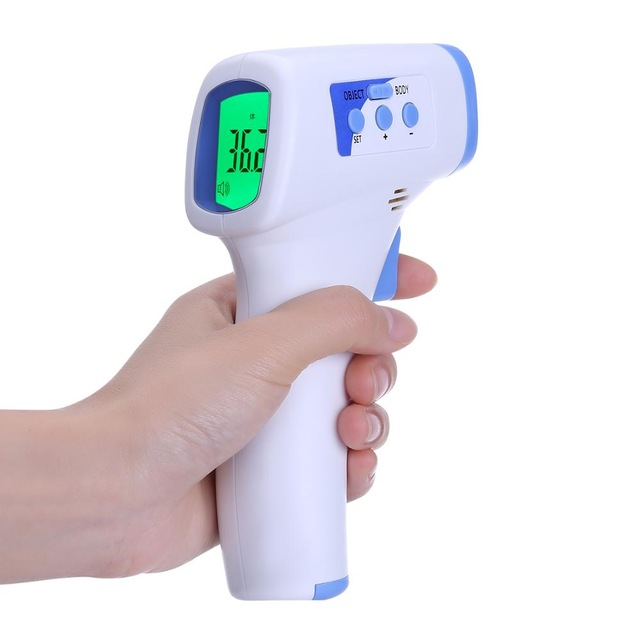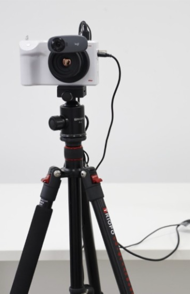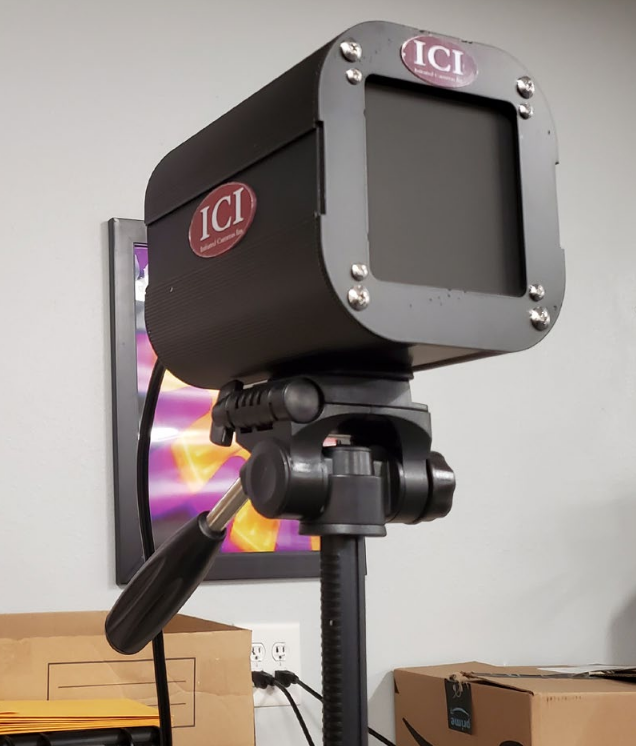Level III Infraspection Institute Certified Infrared Thermographer #1391
Infrared Body Temperature Screening Technician
Jersey Infrared Consultants
Post Office Box 39
Burlington, NJ 08016
Ph: 609-386-1281
www.jerseyir.com
email:
Discussion
Many communicable diseases, including COVID-19, cause an increase in human body temperature. Based on this fact, one part of the Federal guideline “Opening Up America Again” requires businesses to perform temperature checks for workers, visitors, and guests. As businesses plan to reopen, there are a number of options available for conducting temperature checks. These include contact and noncontact thermometry and thermal imaging.
Methodology and equipment choice will vary between companies and will be largely dependent upon:
- Number of employees and visitors per day
- Speed at which testing must be accomplished
- Available budget for the testing system
For facilities with relatively few employees and visitors, thermometry will likely be sufficient. In locations with larger work forces and/or a high volume of customers or visitors, thermal imaging systems may be preferred. The following offers a comparison between temperature measurement methods.
| Contact Thermometer – commonly used in doctor’s offices or at home | ||
|
Advantages |
 |
Challenges |
| Infrared Thermometer – aka Non-contact infrared thermometers (NCIT) | ||
|
Advantages |
 |
Challenges |
| Infrared Thermal Imager – aka “Infrared Imager” or “Infrared Camera” | ||
|
Advantages |
  |
Challenges |
For facilities electing to use a thermal imager, it should be noted that a thermal imaging system is not a stand alone tool. Rather, the thermal imager is used as a screening tool to quickly identify persons exhibiting a body temperature above an established baseline.
Persons found to be above the baseline temperature are requested to have their temperature confirmed using a clinical grade thermometer. Should a person be confirmed febrile, they should not be granted access to the facility.
What is FDA 510(k) Cleared
In the United States, devices used as diagnostic tools for medical applications fall under the jurisdiction of the Food and Drug Administration. The manufacturer of any device used for such diagnostics must obtain FDA 510(k) clearance before selling or marketing the device. This includes thermal imagers used for body temperature screening.
In April 2020, the FDA issued nonbinding guidance relaxing the enforcement of FDA 510(k) clearance for the use of infrared thermal imagers for body temperature screening during the COVID-19 pandemic. The two most important parts of this recommendation are the following:
- The relaxation of enforcement is intended to be in place ONLY until the end of the public health emergency. “This policy is intended to remain in effect only for the duration of the public health emergency related to COVID-19…”
- Lists detailed performance specifications for non-510(k) imagers.
The FDA Guideline may be found here: https://www.fda.gov/media/137079/download
Up until April 2020, infrared imagers used for human temperature measurement were generally purpose-built and not widely available. The FDA’s April 2020 guidance allowed the use of a much broader range of thermal imagers including many originally intended for industrial use.
The FDA’s April guidance was intended to help expand the availability of thermal imaging systems and mitigate thermometer shortages during the public health emergency. However, this has resulted in massive misrepresentation by some manufacturers regarding equipment capabilities.
If you are considering an infrared thermal imager as part of your facility’s body temperature screening program, below are key points to consider before deciding on a particular instrument.
Does the imager have FDA 510(k) clearance? Having 510(k) clearance will allow the imager’s use following the end of the COVID-19 pandemic. Make certain to request a copy of the FDA 510(k) clearance letter prior to making a purchase.
According to the April 2020 FDA guidance, imagers that do not a have a 510(k) clearance should be tested using alternative specifications that provide similar results to IEC 80601-2-59:2017. This could include:
- Measurement uncertainty of less than or equal to ±0.9°F over the temperature range of 93.2 – 102.2°F
- The system includes an accurate blackbody temperature reference source
- Stability and drift are less than 0.36 F within a time frame specified by the manufacturer
In order to help ensure accuracy, the thermal imager should have a minimum detector size (resolution) of 320 x 240 pixels.

Quick Reference Chart
|
|
Contact Thermometer |
Infrared Thermometer |
Purpose-Built |
Industrial Grade |
|
Operator Training |
Minimal |
Minimal |
Required |
Required |
|
Sources |
Pharmacies |
Pharmacies |
Manufacturers |
Manufacturers |
|
Availability |
In Stock |
Stock – 2 weeks |
Stock – 4 weeks |
Stock – 4 weeks |
|
Cost Range |
$15 – $100 |
$80 – $250 |
$3000 – $15000+ |
$5500 – $10,000+ |
Implementing Best Practices
The following are some of the basic elements of a body temperature screening program. These are based on documents provided by the FDA and ISO, as well as industry best practices, and apply to ALL infrared thermal imagers.
- Imagers are triage only – 2nd screening is required to confirm elevated body temperature
- Operators should be properly trained and certified
- Follow a written policy for implementing and operating your program
- Follow appropriate environmental and system setup protocol
- Room temperature between 68 – 76°F and relative humidity 10-50%
- Avoid reflective backgrounds
- Avoid drafts, direct sunlight, and radiant heat sources
- Avoid strong lighting
- Allow the appropriate distance between the imager and the person being screened
- Imager should be calibrated during installation, setup, and location changes
- Only one (1) person is to be screened at a time
- All hats, masks, and glasses should be removed during imaging
- Subject’s face should fill more than 50% of the imager screen
- The subject’s face should be perpendicular to the imager
Conclusion
With the relaxation of enforcement by the FDA, many devices are being labeled “infrared”, “fever detection” or “temperature measurement”. Ask for the product specification sheet (it should have the information recommended by the FDA as a minimum); ask how long the product has been in use for body temperature measurement; check out references. If something sounds too good to be true, proceed very cautiously.
Implementing a body temperature screening program can be a daunting task. Since this is not a “point and shoot” or “one-size fits all” technology, and the safety of your workplace relies on your temperature check program, you may want to consult a Certified Infrared Thermographer who is also a Certified Infrared Body Temperature Screening Technician.
Additional Resources
White House
Guidelines Opening Up America Again, April 2020 – https://www.whitehouse.gov/openingamerica/
Note: Under “Phase Guidelines”, employers are responsible for implementing appropriate policies, including “Temperature checks”.
OSHA
OSHA COVID 19 Website – https://www.osha.gov/SLTC/covid-19/
OSHA: Guidance on Preparing Workplaces for COVID-19, OSHA 3990-03 2020 – https://www.osha.gov/Publications/OSHA3990.pdf
Center for Disease Control (CDC)
CDC Coronavirus Website – https://www.cdc.gov/coronavirus/2019-ncov/community/organizations/ businesses-employers.html
CDC: Interim Guidance for Businesses and Employers to Plan and Respond to Coronavirus Disease 2019 (COVID-19) – https://www.cdc.gov/coronavirus/2019-ncov/community/guidance-business-response.html
Food and Drug Administration (FDA)
Enforcement Policy for Telethermographic Systems During the Coronavirus Disease 2019 (COVID-19) Public Health Emergency Guidance for Industry and Food and Drug Administration Staff – April 2020 – https://www.fda.gov/media/137079/download
Note: This document provides the guidance for the regulation and enforcement of the use of infrared thermal imagers for body temperature screening.
Thermal Imaging Systems – May 13, 2020 – https://www.fda.gov/medical-devices/general-hospital-devices-and-supplies/thermal-imaging-systems-infrared-thermographic-systems-thermal-imaging-cameras


